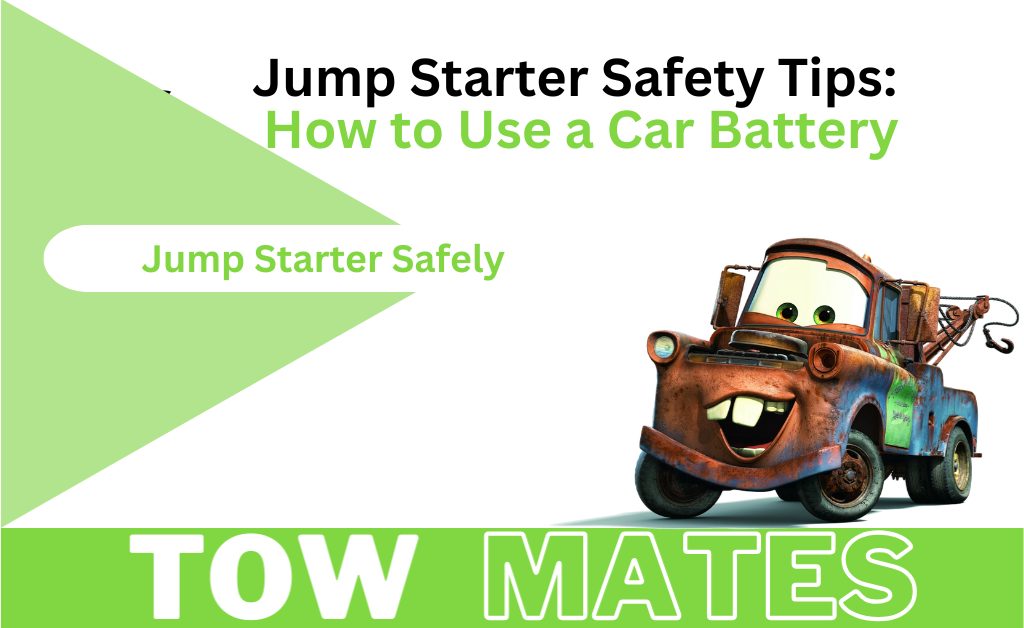Nothing ruins your day like a car that won’t start. A dead battery can strike at the worst time, whether you’re late for work or stuck in a remote area. Thankfully, modern car battery jump starters have made the process much easier and safer—if you know what you’re doing. This guide breaks down essential jump starter safety tips so you can avoid injury, protect your car’s electrical system, and get back on the road without calling for help.
Why Safety Should Come First with Car Battery Jump Starters
Working with car batteries isn’t as simple as it might seem. Batteries store a lot of energy, and if handled carelessly, they can spark, explode, or leak harmful chemicals. Understanding how to manage voltage and avoiding common mistakes can prevent injuries and expensive repairs.
The Risks of Improper Use
Using a jump starter the wrong way can lead to:
- Electrical shorts or damage to your vehicle’s system
- Fire hazards
- Harmful acid exposure from damaged batteries
- Shock or burns from improper cable handling
Following proper jump starter safety tips is not optional—it’s essential.
What You Need Before Jump Starting Your Car
Before doing anything, gather the right tools and take proper precautions.
Tools You’ll Need
- A fully charged lithium-ion jump starter (or a traditional one)
- Jumper cables (if using an external battery)
- Safety goggles and gloves
- Owner’s manual (your car’s and the jump starters)
Safety Prep Checklist
- Remove all jewelry: Metal accessories can conduct electricity and increase the risk of burns.
- Put on eye protection: Car batteries can release gas that irritates your eyes or, in rare cases, cause a small explosion.
- Check weather conditions: Rain or snow increases the risk of slipping or shorting electrical connections.
- Inspect your battery: Don’t try to jump a swollen, cracked, or leaking battery.
Step-by-Step: How to Safely Jump Start a Car
Step 1: Park Safely and Turn Everything Off
If using a second vehicle, make sure both cars are in park (or neutral if manual). Turn off all lights, the motor, and accessories like the radio or air conditioning.
Step 2: Connect Cables the Right Way
- Red to dead – Connect the red (positive) clamp to the positive terminal on the dead battery.
- Red to donor – Attach the other red clamp to the positive terminal of the jump starter.
- Black to ground – Connect the black (negative) clamp to an unpainted metal surface on the vehicle frame—never the battery itself.
Step 3: Power On and Start
Turn on your jump starter and wait a few moments. Then try starting your vehicle. If it doesn’t start after a few tries, wait a minute and try again. Do not crank the engine for more than 5 seconds at a time.
Step 4: Disconnect in Reverse Order
- Remove the black clamp from your car.
- Disconnect the red clamp.
- Turn off and safely stow the jump starter.
After the Jump: Don’t Skip These Maintenance Tips
Recharge the Jump Starter
Don’t forget to plug your lithium jump starter back in. Most models need a few hours to regain a full charge. Keeping it charged means it’s ready when you need it.
Check the Battery Health
If your battery died suddenly, it could be a sign of a deeper issue. Inspect for corrosion, low fluid, or old age. Most car batteries last 3–5 years.
Common Mistakes to Avoid
Jump Starting a Frozen Battery
Trying to jump a battery that’s frozen can cause it to burst. If it’s extremely cold outside and the battery looks bloated or icy, wait until it thaws.
Touching Clamps Together
This can cause a high-voltage spark or damage the jump starter. Always keep the clamps apart until you’re ready to connect them.
Ignoring Manufacturer Guidelines
Every vehicle and jump starter is a little different. Check the owner’s manual for voltage specs and safe connection points.
Weather Matters: Jump Starting in Extreme Conditions
Cold weather can sap your battery’s power and cause sluggish starts. Hot weather, on the other hand, can evaporate battery fluid and lead to corrosion. It’s smart to store your jump starter in a place where extreme temperatures won’t damage it.
Lithium Battery Storage Jump starter safety tips
- Avoid leaving it in a hot car
- Store at room temperature
- Check charge monthly
When to Call a Professional
If your car still won’t start after a jump, the issue might not be the battery. Problems with the alternator, starter motor, or other parts of the electrical system could be to blame. In those cases, it’s safer to call roadside assistance or a mechanic.
Jump starters are incredibly useful, but only when used with care. Following these jump starter safety tips can help you avoid accidents and get moving again without damaging your vehicle. Respect the voltage, keep your tools in good condition, and always stay alert when working with electricity.

